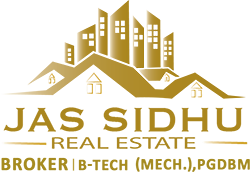This strategy is less about links… and more about getting your content in front of the right people. I saw that most of the content ranking for “SEO Audit” listed out non-technical steps. Most of the content ranking for “increase website traffic” listed bite-sized traffic tips. When it comes to search engine optimization, short URLs generally outperform long URLs.
On-Page SEO Packages
Think of your meta description like your Facebook ad copy, it’s role is to entice readers to click on your result. The H1 tag is usually the most visible content on a page and should not be used more than once per page or blog content. Most modern Content Management Systems such as WordPress and Wix, create the blog article title using the H1 tag. Some SEO professionals agree that the target keyword (and variations thereof) should be used no more than once per 200 words of blog copy.
A meta description is a short description that appears in your search snippet. Google can pull information from a page to create that description. If your target keyword is missing from any of these areas, you’ll be prompted to add it. On-page SEO can improve the overall quality of a page, and quality is the #1 ranking factor. On-page SEO is like arranging your products neatly and having clear labels (keywords) so people can find what they need inside. Off-page SEO is like getting SEO Anomaly good reviews from customers and having other stores recommend yours – it builds trust and attracts more visitors.
Whether you want to order specific on-page SEO services or create a comprehensive strategy, we have an SEO service for you. Here are some of our on-page SEO strategies to help businesses boost their search engine ranking. By implementing these on-page SEO tactics along with off-site SEO such as link-building and guest blogging, you will boost your rankings in the search engines significantly. Creating internal links helps Google find, index and understand all of the pages on your website. Additionally, the more links that a page or a blog post receives, the more Google will view it as something of “high value”. Examples of title tag modifiers are “best”, “review”, “free”, “ultimate” and “guide”.
Additionally, a clean site navigation and structure can also lead to sitelinks appearing in Google search results. Instead of the word count, you should focus on serving the best answer. Let’s say you have an SEO blog and your focus keyword for a new post is “SEO Audit ”. And in this section, we dig deeper to show you the exact steps to creating the type of content that ranks in 2020 (and beyond). It’s things like the technical set-up, your code quality, and user-friendliness.
Essentially, Google wants to make sure that the title fits with the content on the page. When you create pages on your site, it’s crucial that your keyword matches the content on your page. It’s an important part of on-page SEO and it will influence how your page ranks.
Identify Target Keywords
- On-page SEO refers to the optimization of website structure and content – anything that is on the page (as opposed to off-page SEO).
- The assortment of random numbers and letters doesn’t tell you, or search engines, what’s on the page.
- It’s good to review your on-page SEO strategy often, so you can ensure you’re keeping your strategy agile.
- This optimization reduces latency and improves overall loading time.
- Both Microsoft and Google hold several patents suggesting content in the more relevant sections of HTML carry more weight.
If you want easy access to all of your multimedia content, I suggest using SEOBoost’s content management feature that stores all your images in one place. You get unlimited access to creative assets and can organize and use them however you like. This article is your complete 101 guide to On-page SEO, what it means, why it makes a difference to search engine crawlers, and how to implement it in 2024. Google search algorithms have become more intelligent, and besides keyword relevancy in content, they are also looking for topic relevancy. The truth is, it is not the number of words that brings high rankings, but the fact that the long post usually covers the topic in the most comprehensive way. Yeah, well, “the longer your content is, the better your rankings are”.
Why On-Page SEO Is Important
Adding keywords to your URL helps explain your page content to search engines and users, as well as reflecting where the page sits in your website. For example, squarespace.com/pricing helps search engines categorize the page as a plan pricing page and makes the page content clear for browsers before they even click through. It directly impacts search engine rankings, user experience, and the discoverability of your content. Neglecting on-page SEO can hinder your site’s visibility and user engagement. Including images can help you rank in Google Images and drive more traffic.
WebFX’s on-page SEO services include thorough title and meta tag optimizations to help you create click-worthy links that are relevant (and helpful) to users. Along with search intent, backlinks are one of the most critical ranking factors. If you’re trying to boost the rankings of the page you’re optimizing, you’ll want to add internal links to it from other pages on your site. Titles and meta descriptions are some of the first things that search engines Googlebot and Bingbot look at to understand your page content.
The tool lets you know if you have your keyword in all the key locations like the H1 and body content (more on why this matters soon). Mastering on-page SEO can have a HUGE effect on your rankings, traffic, and conversions. Put them into practice to enhance your rankings and drive more traffic.
